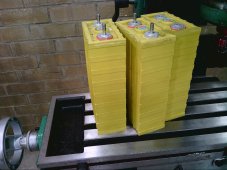Almost four years ago I purchased thirty 50Ah Winston cells, and treated them very gently.
Over the first three years I had three of those cells fail short circuit from dendrite formation, and never understood the cause.
I think I will try Tom's magic break in procedure with my new Shenzhen Luyan "Amy" cells and hope for some better luck.
So, 56 amps, 47.6 amps, 39.2 amps, 30.8 amps, 2.4 amps, 14 amps, charging in six decreasing steps.
The associated discharges will be a good opportunity to check capacity.



